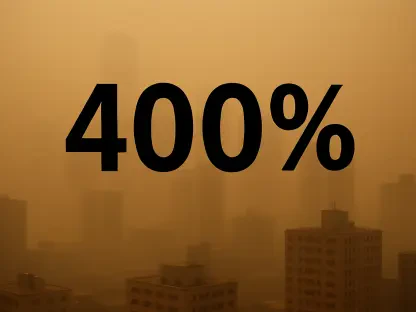Setting the Stage for Safer Infrastructure
In the wake of devastating wildfires that scorched West Los Angeles County, a staggering reality has emerged: outdated overhead power lines pose a lethal threat during natural disasters, often knocked down by high winds or flames. These exposed wires have historically blocked evacuation routes and sparked further destruction, as seen in past incidents across California, prompting Los Angeles County officials to champion a transformative solution—burying power lines underground to safeguard communities and rebuild with resilience in mind.
The importance of adopting best practices for undergrounding infrastructure cannot be overstated, especially in disaster-prone regions where safety and reliability are paramount. This guide delves into actionable strategies and lessons learned from current efforts, offering a roadmap for stakeholders to mitigate risks and enhance community protection. By exploring the motivations, benefits, and challenges of this initiative, the following sections aim to equip policymakers, utility providers, and residents with the tools to support a safer future.
Best Practices for Undergrounding Power Lines
Understanding the Imperative for Change
A fundamental best practice in modern infrastructure planning is recognizing the urgent need to prevent disaster through proactive measures. In areas vulnerable to wildfires, overhead power lines represent a ticking time bomb, capable of igniting fires or obstructing escape during emergencies. Drawing from historical tragedies like the Camp Fire in Paradise, California, where downed wires compounded chaos, the push to bury lines emerges as a critical safeguard. This approach prioritizes public safety by eliminating visible hazards that exacerbate crisis situations.
Beyond immediate risk reduction, undergrounding offers long-term advantages that justify its adoption as a standard. Enhanced service reliability, decreased maintenance expenses over time, and aesthetic improvements to neighborhoods are among the compelling benefits. County leaders, such as Supervisor Lindsey Horvath, have underscored that this measure “saves lives,” reinforcing the moral and practical obligation to transition away from outdated systems in high-risk zones.
Implementing Strategic Undergrounding Plans
Developing a clear, collaborative strategy among local governments and utility providers stands as a cornerstone of successful undergrounding efforts. Los Angeles County has taken decisive steps by partnering with entities like Southern California Edison (SoCal Edison) to target high-risk areas for infrastructure burial. Focusing on regions such as Topanga Canyon, Rambla Pacifico, Pacific Coast Highway, and Altadena, the county demonstrates a commitment to prioritizing zones most susceptible to wildfire threats, ensuring resources are allocated efficiently.
Engaging community stakeholders early in the process is another vital practice to build support and address concerns. Transparent communication about project timelines, costs, and expected outcomes helps align public expectations with operational realities. County officials, alongside utility representatives, have emphasized the importance of public buy-in, noting that resident advocacy can accelerate progress by pressuring reluctant partners to join the effort.
Leveraging Utility Leadership and Progress
A key best practice is to harness the expertise and resources of utility companies already committed to undergrounding initiatives. SoCal Edison’s current project to bury 40 miles of electrical lines in vulnerable L.A. County areas serves as a model of actionable progress. By targeting specific corridors known for high wildfire risk, the utility not only enhances safety but also sets a precedent for scalable solutions that other providers can emulate over time.
In Topanga Canyon, for instance, the tangible impact of these efforts is already evident. Underground lines have begun to reduce outage risks during severe weather, offering residents a more stable power supply while minimizing ignition hazards. This real-world example highlights how focused interventions in critical areas can yield immediate safety gains, providing a blueprint for broader application across the county.
Navigating Resistance from Shared Infrastructure Partners
Addressing resistance from telecommunications companies sharing utility poles is a crucial practice for achieving comprehensive undergrounding. In L.A. County, telecom providers have often balked at burying their lines, leaving poles standing even after power equipment is removed due to joint agreements. A best practice here involves fostering negotiation and, if necessary, pursuing regulatory support to enforce cooperation, ensuring that partial progress does not undermine the overarching goal.
Learning from other regions offers valuable insights for overcoming such obstacles. The city of Paradise, after its catastrophic wildfire, tackled similar telecom resistance through regulatory action, pushing for mandates that aligned all stakeholders. L.A. County can adopt this approach by working with state bodies to compel compliance, demonstrating that persistent advocacy and legal leverage can dismantle barriers to full infrastructure burial.
Balancing Costs with Long-Term Benefits
Acknowledging and planning for the high upfront costs of undergrounding is an essential practice to maintain project momentum. While burying lines is more expensive initially than maintaining overhead systems, the investment pays dividends through reduced maintenance and disaster recovery expenses. County officials advocate for framing these costs as a necessary trade-off for enhanced community safety, encouraging stakeholders to view the expense as a long-term gain rather than a short-term burden.
Securing diverse funding sources and incentives represents another effective strategy to offset financial challenges. Exploring state and federal grants, alongside public-private partnerships, can alleviate the fiscal strain on local budgets. This proactive financial planning ensures that undergrounding projects remain viable, even in the face of economic constraints, paving the way for sustained implementation across broader areas.
Moving Forward with Resilience and Resolve
Reflecting on the journey, Los Angeles County tackled significant hurdles in its mission to bury power lines after devastating wildfires, setting a powerful example of determination. The collaboration with SoCal Edison showcased how targeted efforts in high-risk zones could transform safety outcomes, while persistent challenges with telecom resistance highlighted the need for regulatory intervention. These experiences underscored that infrastructure modernization demanded both innovation and tenacity to protect vulnerable communities.
Looking ahead, stakeholders must commit to advocating for cohesive policies that compel all utility providers to align with undergrounding goals. Filing formal complaints with bodies like the California Public Utilities Commission, as the county prepared to do, offers an actionable path to break through stalemates. Additionally, fostering community education on the benefits of buried infrastructure can amplify public support, ensuring that the momentum for safer, more reliable systems continues to build in disaster-prone regions.









